I came to China to learn about tea, and I didn’t waste any time. I arrive on Monday, and by Tuesday I was out looking for tea. While I am always skeptical of teas found in local tea shops, Tunxi, where I am living, is very close to Huang Shan and close to three major tea regions. (Taiping Hou Kui, Huangshan Mao Feng and Qimen red). I knew if I looked around enough I could find something good.

It’s really not hard to find a tea shop in China. Major cities usually have whole streets full of them. There are whole avenues dedicated to just tea. As I went down the tea street I knew all of these shops would have some form of Mao Feng, but I also knew it wouldn’t always be good. I have been down enough of these tea streets to learn what to look for and what to avoid. For example, in my time I have learned to avoid tea shops that display large company names on the wall. These are usually bigger brands, with tea from factories producing usually only mediocre quality. The workers there are also more likely to be hired by the company, and not tea lovers themselves; thus making it hard to learn from them. The other thing I have learned to avoid is a store where space is cluttered. True tea lovers understand the organization, cleanliness, and presentation is crucial. When you see a storefront with messy shelves, bags lying around and very little open surface for tea, that is a sign of someone who has not truly devoted themselves to tea.
Something to look for on the other hand are shops that display other aspects of Chinese culture. Over the years tea has become interwoven with many other parts of China’s rich tradition. It is hard to be immersed in tea and not become interesting in other cultural luxuries like calligraphy, the guqin, or even rocks. These all represent the same values of slowing down and appreciating finer things. A store that also holds these instruments of leisure, is one that seeks to immerse themselves totally in the tea life. The tea house doesn’t have to be fancy though, my first tea purchase was in a shop that was plain white, with clean wooden shelves and a plain wooden table.
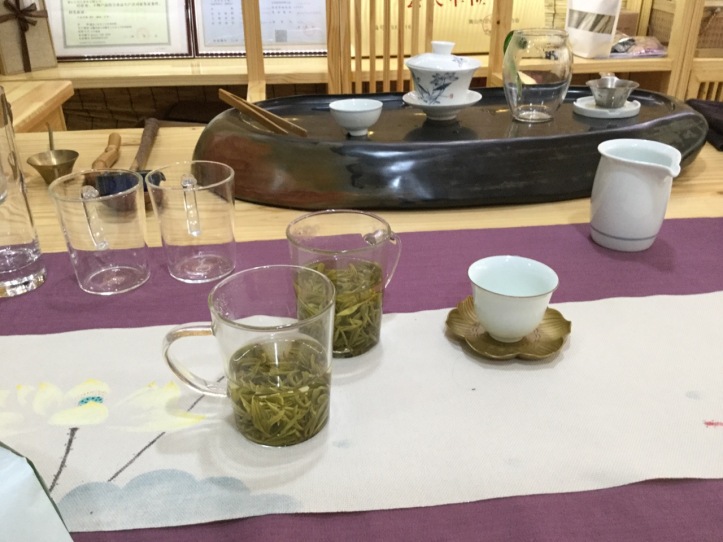
It was the simplicity of the shop that caught my attention. The chairs and windows were made of simple wood and all smelled like they had just been made. The table presentation was simple and nice, different sort of cups lined up with a tea cloth going across one side. We sat around their table and began to taste. I first tasted their Huang Shan Mao Feng. The Mao Feng they had showed medium savoriness, sweetness, and some egg white notes. This is what I would consider a medium quality Mao Feng. It shows no clear or strong flaws, has some good notes but does not particularly amaze me. After the second brew, I told them I had brought a Mao Feng and offered to do a side by side tasting. This is a request no tea drinker can say no to.

The conversation went quiet as we all took the time to compare the two teas. Their tea was bolder with more flavor, while mine was lighter and more complex. We noticed a large difference in size of the leaf and at this point I realized much of the Mao Fengs I see are usually bigger than the size I have. Theirs seemed to be twice the size of mine. What caused that difference Was it a different cultivar? A different making style? A different Picking? I decided to ask my Mao Feng farming friend about this and he replied with one simple photo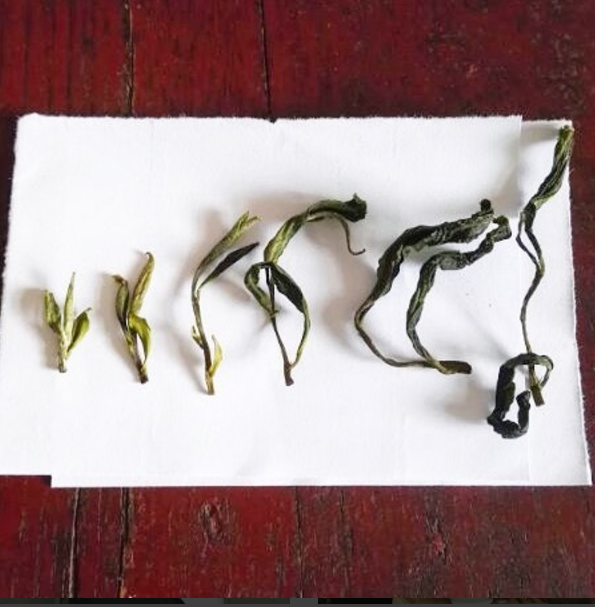
The second I saw the photo I understood. What I was looking at was the progression of size of the leaf over the course of the Mao Feng season. The beginning of the season, when the plant first buds, the bud is fat and the leaves are small. As time goes on the leaves get larger and the bud gets longer but loses its girth. At a point though, the bud opens up into a leaf and it is all leaves; this is very late picking for green tea, you should never pay a high price for the last two examples.
The difference between my Mao Feng and their Mao Feng was between one and two. The difference between pick one and two is about 3 – 7 days. Back in America though, it is not uncommon to see number three. The difference between one and three is 7 – 12 days.
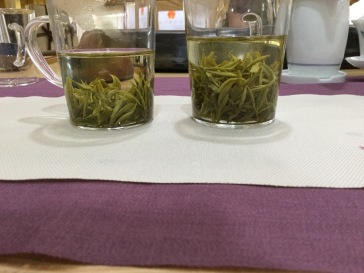
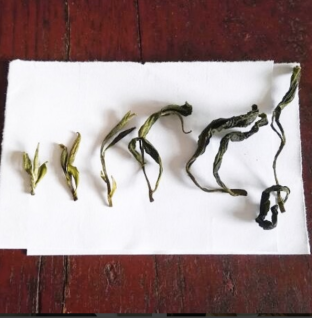
As you can see the leaf size on the one on the left, matches more closely to the size of the first and earliest picked leaf; while the leaf size of the one on the right matches more to the second one
Understanding how leaves grow over the season is a crucial part of objectively judging tea. The earlier the tea is picked the more desirable traits the tea has. It is softer, more complex, and is much sweeter. As the season goes on and the leaves grow, the flavor becomes bolder, but it loses the complexity and isn’t as sweet. The latest picks teas have an overly simple, strong flavor and will also present bitterness.
Every body at the table enjoyed both Mao Fengs. It was a good master class in pick dates. After we finished the Mao Fengs we chatted for a while. They then offered me a red tea that is to date one of the best red teas I have ever had.
But that’s another story. 😉
To be continued…
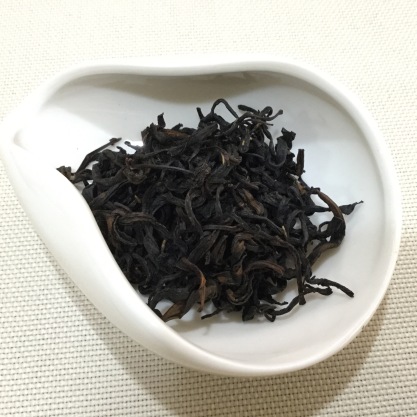

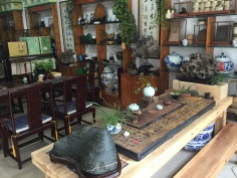


[…] tea to honest farmers with plots in Zheng yan, and everything in between. I have touched on the topic of how to tell which shop is which, but mostly its about luck. That being said I did get lucky this […]
LikeLike
[…] Living near NYC, I have the advantage of being close to a quickly developing gongfu culture. Mao Feng vs Mao Feng: A Lesson in Pick Dates Tea friend Dylan has been sharing his tea adventures in China on his blog and I’ve been […]
LikeLike
[…] Living near NYC, I have the advantage of being close to a quickly developing gongfu culture. Mao Feng vs Mao Feng: A Lesson in Pick Dates Tea friend Dylan has been sharing his tea adventures in China on his blog and I’ve been […]
LikeLike